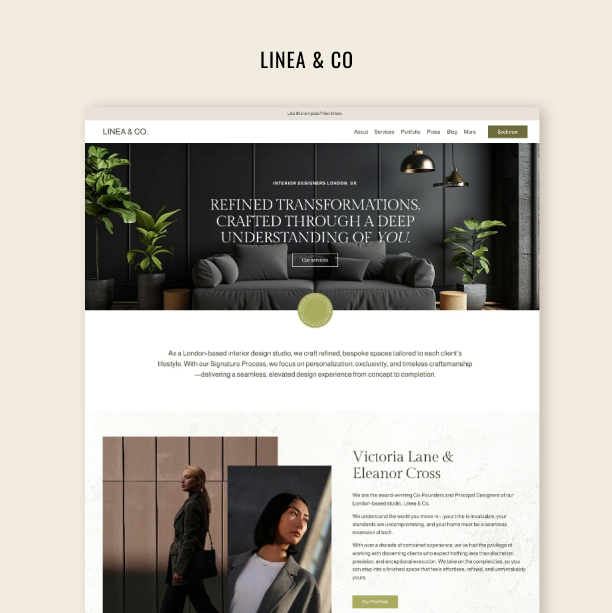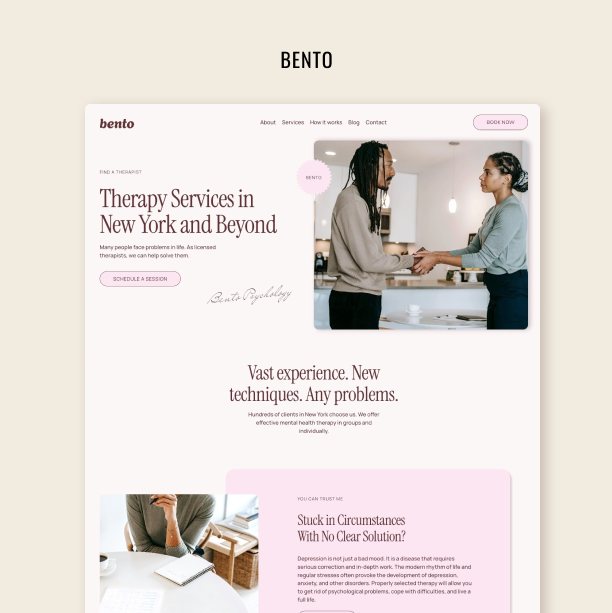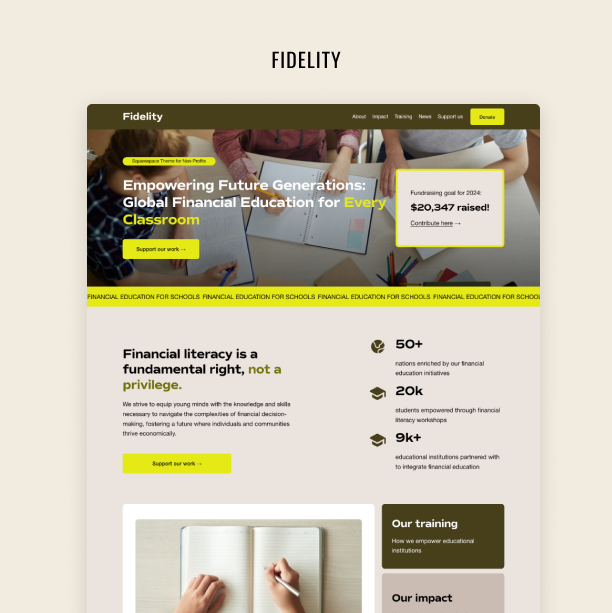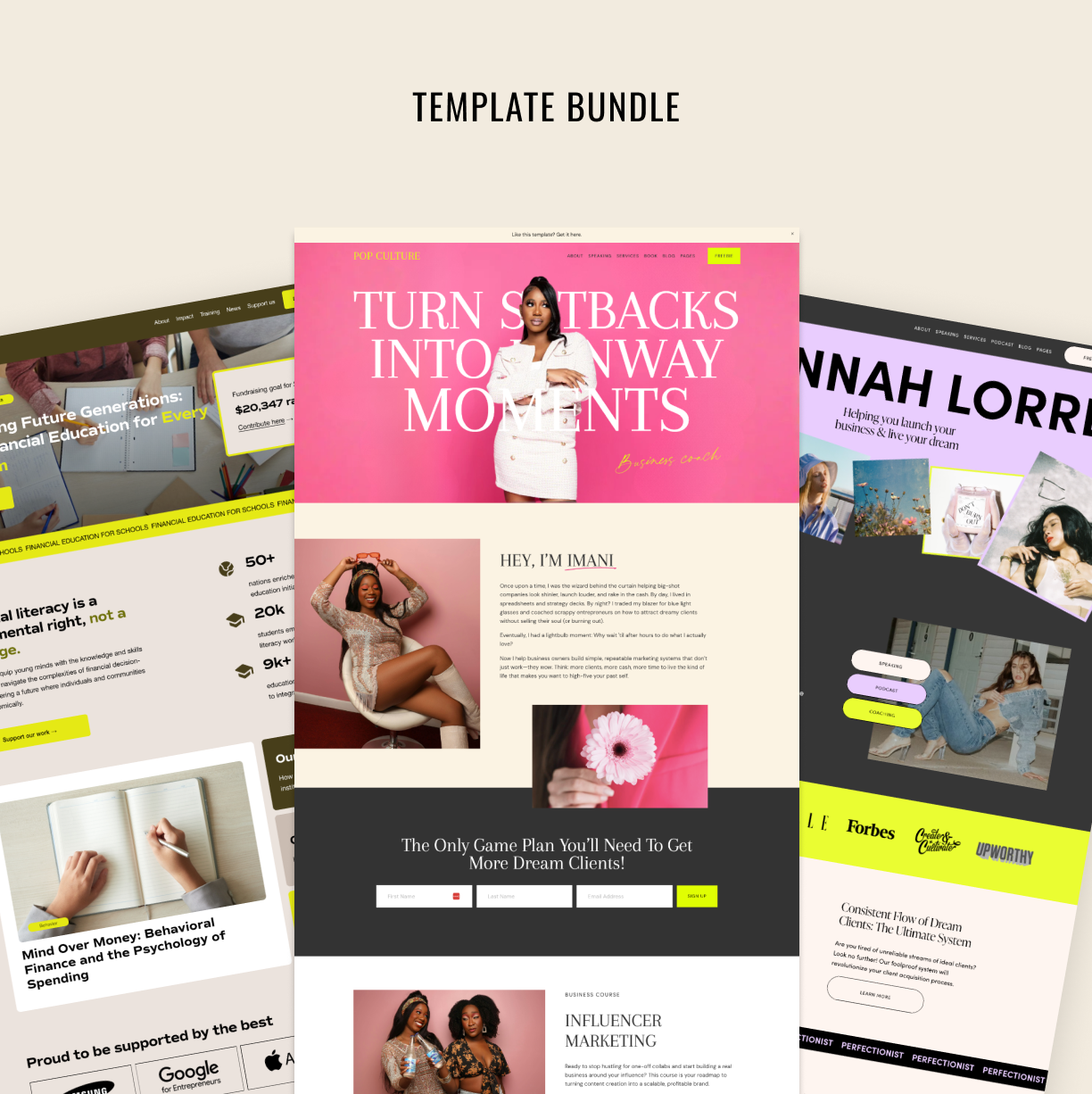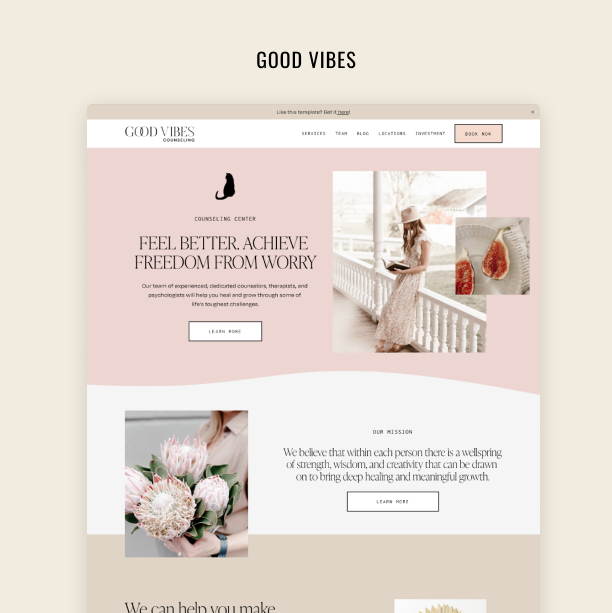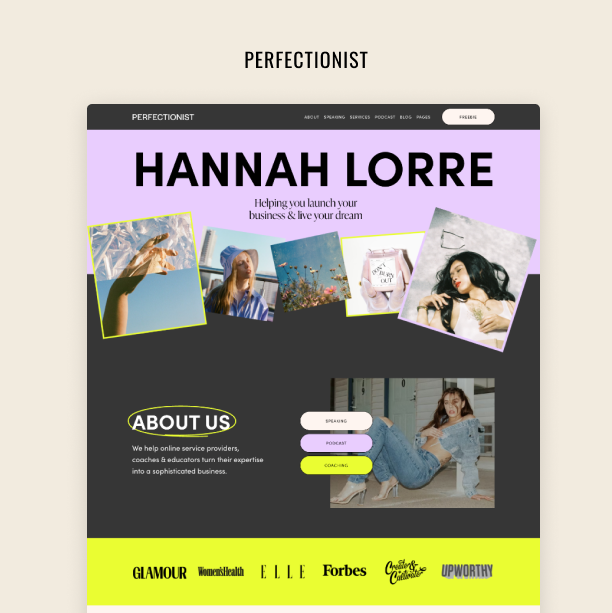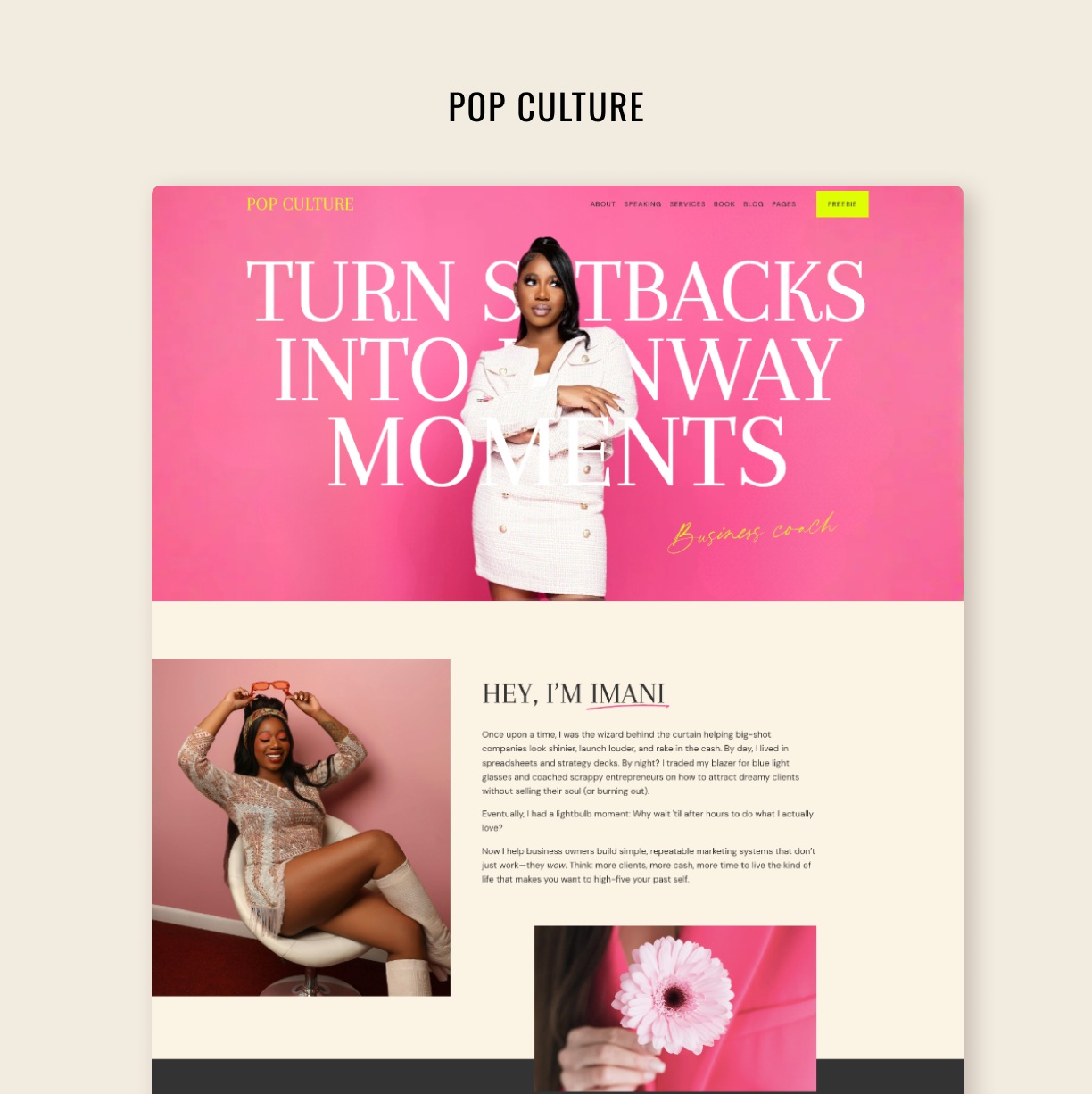How I Organize My Work as a Creative Business Owner
Work-life balance as an online founder working from home
Applet Studio just recently turned six years old. I actually started this business a year before the official launch when I was pregnant with my child – that’s when I got my first clients. These clients came to be by word of mouth, and I only launched a website a year later, in 2019, which I consider the official start of the business. I’ve been working on Applet Studio since my son was very small, and I’ve been running it pretty much full-time, as a stay-at-home mother, since he was a year and a half.
The business has grown a lot over the past six years. I launched a Squarespace template shop, and we’ve become one of the top providers in the Squarespace niche. So naturally, I get a lot of questions about how I manage it all – how I get everything done.
This article is my attempt to answer that: how I juggle family life and work, stay at home with my kid, and run an online business – work remotely with clients and sell digital products.
How I Hired Myself
The main organizational strategy I rely on is treating my business like a full-time job. I essentially hired myself – and I stick to regular working hours, usually from 9 a.m. to 3 p.m., sometimes until 6 p.m. This structure works for me, probably because I was trained to be an employee and spent years working in traditional office settings. The habit of showing up Monday through Friday and putting in 6–8 focused hours each day feels natural.
That doesn’t mean I don’t allow flexibility. If I need to run errands or take a midday break, I do. I’ll occasionally work a few hours over the weekend if needed, and I almost always check email and respond to messages during that time. But overall, I stick to consistent business hours – nothing fancy, just a simple routine that helps me stay on track.
How I Batch Meetings and Organize my Calendar
The main thing that keeps me organized is my calendar – specifically, my Google Calendar. I sit down and plan my week (or sometimes a couple of weeks, at most a month) in advance and block out time for specific tasks. For example, if I want to launch a new Squarespace template, I’ll block time for it on my calendar so no one can book meetings during those hours.
A lot of people book meetings with me – current clients, new inquiries, and prospects who fill out the form on my website. My calendar is embedded there, so technically anyone can request a free discovery call. To manage this, I try to batch all meetings into two days – usually Tuesdays and Thursdays. That way, I have uninterrupted blocks of time the rest of the week to actually work on projects.
Because when someone books a call at 1 p.m., it splits my day in half and throws off my focus. I’m most productive when I have nothing scheduled and I can plan to work on just one thing for the whole day. That’s when I do my best work.
The way I use my calendar is very intentional. If someone books a meeting, I often block off the rest of the day. I also block time for specific tasks using color coding, so I can quickly see what my week looks like at a glance. I used to plan everything in a paper notebook, but moving to a digital calendar has been more effective for me. It might seem limiting to plan everything in advance, but it’s actually been really freeing. My coach suggested I try it – and it’s been working really well.
How I Manage the Workload
As an entrepreneur and online business owner, I have a never-ending to-do list. I’m working in my business and on my business – planning the marketing while also doing custom work for clients. It honestly feels like I’m doing the jobs of multiple people.
To manage that kind of workload – where you feel like you’re doing everything but you’re still behind – I had to learn to set really clear expectations for what I can realistically accomplish in a week. I don’t use timers or tracking tools, but I’ve learned how long certain types of design work usually take me, and I plan around that. I try to anticipate how much time things will take and structure each day around one big task.
If I can get two or three big things done in a week, that’s enough. That’s what I plan for. I also plan one to two months ahead when it comes to launches or promotional activities. I’ve tried planning six months in advance, but it just doesn’t work for me – I want to leave space for some spontaneity.
How I Approach Projects
I’d rather plan one project, work on it from start to finish, and actually accomplish it. For example, if I plan to launch a new template, that includes a specific amount of design and copywriting work, plus planning the marketing around the launch. I prefer to focus on one thing at a time and get it done – rather than splitting my attention across multiple tasks and ending up with nothing finished.
When I have too many things going on at once, that’s when I get overwhelmed. I’ve learned to manage my workload by splitting it into clear, focused projects. When I stay focused on a single project, I can move through it quickly – especially when I’m in a state of deep work.
Of course, not every day goes as planned. Some days, new inquiries come in, emails pile up, or something breaks and needs my attention. That’s when I lose my focus, and I shift into doing smaller admin-type tasks – replying to messages, fixing tech things, and setting up little pieces of the business. And when that happens, I’ve learned to just accept it, call it a day, and move on.
How I Run an Office – But at Home
I don’t believe in the digital nomad lifestyle where you’re sitting on a beach with a laptop in your lap and sand in your keyboard. I run an office – but it just happens to be located in my home. I’ve even considered renting a separate office space, but that’s a task for another year.
Right now, we have a designated room in the house that functions as a real office. It has desks, full-size monitors, comfy chairs, and even a coffee maker. It looks and feels like a real workspace. When I’m working, I put on clothes I’d wear if I were stepping out of the house – nothing fancy, just a clear switch from home mode to work mode. In the evening, I’ll change into my home clothes, as if I just got back from the office.
Because I work from home, I make a point of getting outside every day. Whether it’s a walk, errands, coffee with a friend, or dinner out – I plan for it. If I don’t get out of the house for a couple of days, it really starts to affect my mental health.
I’ve been running my home office this way for six years, and honestly, I feel ruined for traditional offices. I can’t imagine going back. That said, I still have a strong work ethic – I sit down to work a set number of hours every day. But I also love the flexibility. If I have a doctor’s appointment or just want to hang out downtown in the middle of the day, I can.
Like I said earlier: I’ve hired myself. I’m my own employee. And I’m doing my best to be both a good worker and a good boss.
How I Plan my Weekends
As an online business owner, I constantly have things on my mind – and if I don’t intentionally plan to turn off business mode, I’ll just keep going and going until I burn out. And that’s happened to me more than once over the past six years. It’s not fun when the thing you love doing the most stops bringing you joy and starts to feel like just another routine job.
I’ve realized that in order to stay creative, I need space to be creative – time and freedom where I’m not constrained by client feedback, deadlines, or tasks. For me, designing Squarespace templates often becomes that creative outlet. Sometimes I design one just for the joy of it. That was the case with my most recent template, Pop Culture – I made it purely for fun.
To stay productive in business, you have to rest. You don’t earn rest – rest is a given. And when you’re well rested, you work better. The challenge for me is that work tends to spill into the weekends and days off. I’ll keep working, and by Monday I’m completely drained, wondering why I feel off.
What I’ve learned the hard way is that just like work gives you structure, rest needs structure too. I started planning my weekends – intentionally. That means thinking ahead to Saturday and Sunday and deciding what I’m going to do with that time, even if the plan is to do nothing. If I decide I’m going to lie on the couch all day and watch TV, that’s my plan – and that takes away the guilt because it’s part of the schedule.
Planning rest means actually pursuing rest. Looking forward to it. I might plan a trip to the art supply store to pick out a new watercolor album and spend a couple of hours painting. Or go out in nature with my family. Even cooking and doing chores can be relaxing – when your hands are busy, your brain has space to rest. I might plan a spa visit or just focus on enjoying downtime.
Because really – what’s the point of work if you don’t enjoy your time off? We don’t work just to work. We work so we can live.
What I do When I'm not in the Mood
When I’m not in the mood – when I get sick, or my child gets sick, or something unexpected happens – I just can’t do any work. Or maybe I could technically do something, but it’s just not the same. I feel uninspired, drained, and unable to sit at my computer and be productive.
When that happens, I have a few tricks I use to get myself into work mode. First, I give myself permission to acknowledge that I’m not in the mood – but I still have work to do. I don’t always have the option to skip it. I have obligations, and clients are paying me.
So, I try to trick my brain by letting myself work on something that is interesting. Just for an hour. It could be playing with a new AI tool, designing a Squarespace template, or exploring something I’ve been curious about. Lately, I’ve been experimenting with Framer and Webflow – tools that feel fun and different.
It’s kind of like saying, “You don’t have to work today, just play around with this one thing for a little while, then you’re free to go.” That usually works. Once I start, I get a little burst of energy, and I might even move on to the tasks I’ve been avoiding. I’ll work for maybe two or three hours max, and then I let myself take the rest of the day off – knowing I still accomplished something.
And honestly, the next day, I usually feel better. I’ve also learned not to push myself to the point of exhaustion. There are times when I have to do a 10-hour workday during a busy sprint, but that’s the exception. Most days, I aim for five or six focused hours and let that be enough.
How I Manage Anxiety and Self-Worth
One of the biggest challenges of being an online entrepreneur is that you don’t have a boss. Nobody is telling you what to do. One day, you feel like you’re accomplishing everything and you’re on top of the world. And the next day, it all feels like a fluke – you start questioning whether this whole online business thing is even real. You wonder if you just got lucky, and suddenly it feels like none of it is legit. The brain kicks in with panic: you’re not safe, you need to do more, try harder, or maybe even start looking for a job – just in case.
I’ve had moments like that. When they come, I try to remind myself of the journey I’ve been on over the past six years. I grew this business from nothing. I bootstrapped it with $100 at the very beginning. So instead of comparing myself to other people, I try to compare myself to an earlier version of myself.
Sometimes I think: what would I tell myself just two years ago? And the answer is always the same – she’s doing great. She’s building something real. She’s onto something. And she needs to keep going.
So that’s what I tell myself now: keep going. Keep doing the things that have worked in the past. Do them again. And leave a little space for experiments.
Try Squarespace for free – and save 10% when you purchase a subscription with code APPLET10



